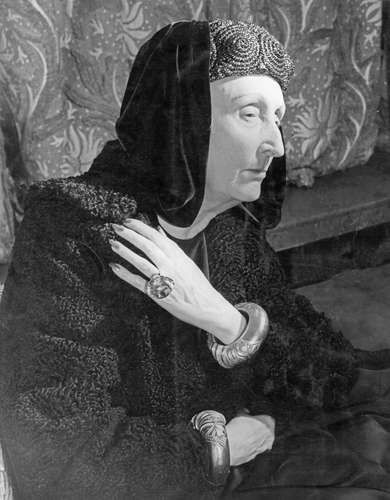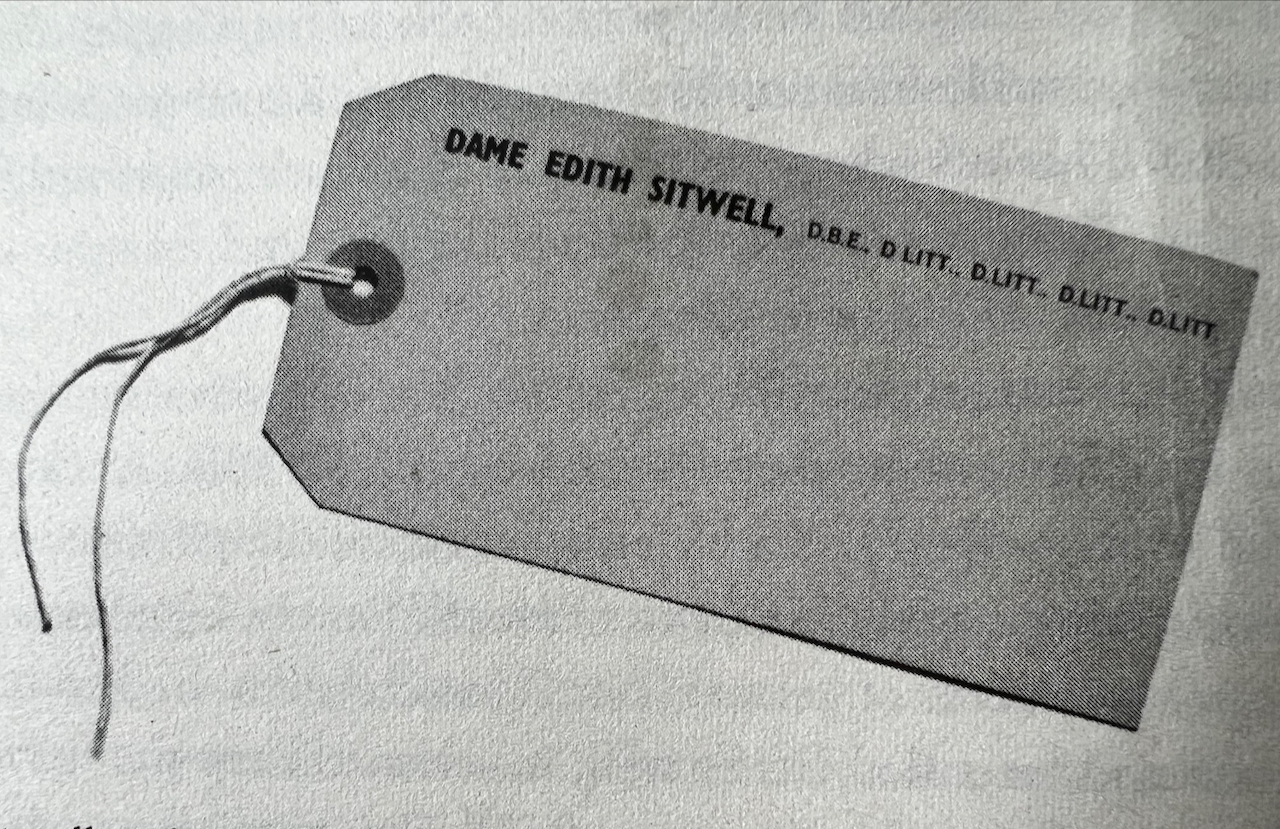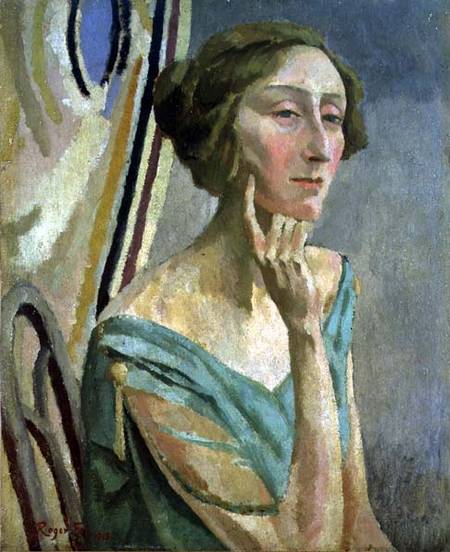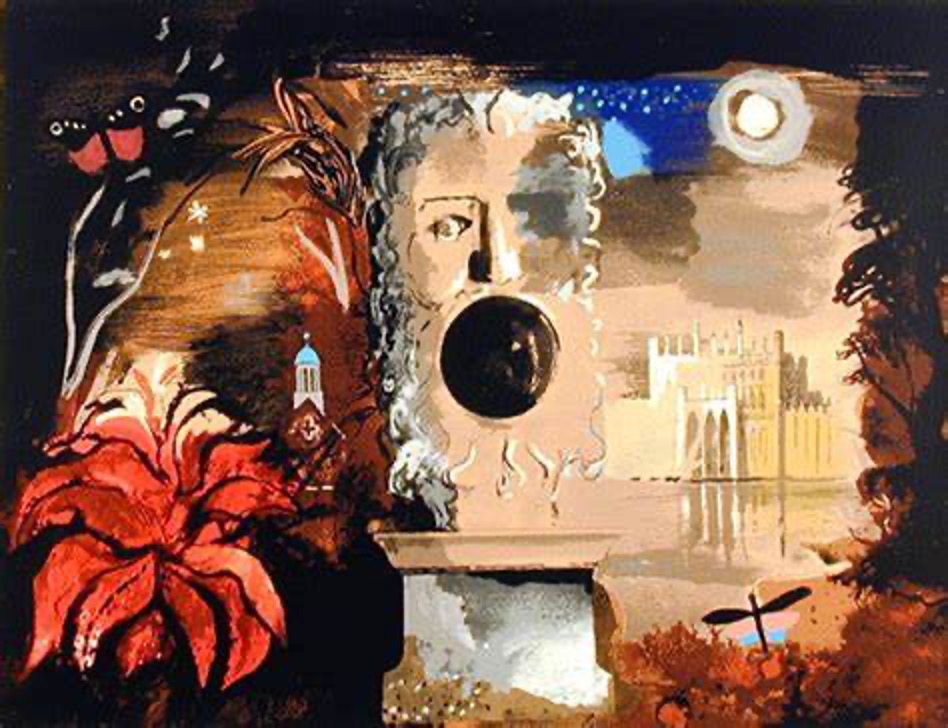
To describe Edith Sitwell’s life as colourful and dramatic would be an understatement. She shot to fame in the 1920s through her unique and inventive collaboration with composer William Walton on her poems Façade. She was a favourite subject for portraitists of the 1920s, including John Singer Sargent, Roger Fry, Wyndham Lewis, Pavel Tchelitchew, and was immortalised in photographs by society photographer Cecil Beaton. Together with her brothers, Osbert and Sacheverell, the Sitwell literary trio became trend setters in the 1920s and 30s, considered by some to rival the Bloomsbury set. Her address book read like a 20th century who’s who. She knew poets and writers such as Siegfried Sassoon, Dylan Thomas, W.B Yeats. T.S. Elliot, Aldous Huxley, D.H. Lawrence, Robert Graves, and Virginia Woolf, (to name just a few) and celebrities such as Noël Coward, Alec Guinness, and Marilyn Monroe. Descended from Plantagenet royalty she flaunted her unusual looks with her unique fashion sense. Her six foot frame was encased in bohemian or medieval garb complete with feathery hats and colourful turbans. Her hands, considered by her to be her best feature, were laden with enormous rings. Her motto was:
Why not be oneself? That is the whole secret of a successful appearance. If one is a greyhound, why try to look like a Pekingese?
Edith’s early poems developed from fantastical, whimsical experiments with rhythm, texture and sound during the Roaring ‘20s, through to more serious poetry of the 1940s coloured by World War II and the dropping of the atomic bomb such as ‘Still falls the Rain’ and ‘The Shadow of Cain’. In the latter part of her life, she wholeheartedly embraced a return to spiritual values, both in her poetry and by converting to Roman Catholicism. By the time she died in 1964 at the age of 77 she had been made a Dame, held five honorary literary degrees from Durham, Leeds, Oxford, Sheffield and Hull and was considered the high priestess of English poetry. In 1962, not only was a memorial concert held for her at the Festival Hall attended by 3000 people, but she appeared on the ITV programme, ‘This is your Life’. However, only a few years after her death, her reputation crashed. She had brawled with critics publicly for over five decades (whom she dubbed the ‘pipsqueakery’) and was now no longer around to defend herself as she had done so colourfully during her life.

In the 1950s Edith Sitwell’s luggage labels left no-one in doubt as to who she was!

2023 marks the centenary of the premier of Façade in 1923. Next year, 2024, marks the 60th anniversary of Edith Sitwell’s death: a perfect opportunity to revive and celebrate her wonderfully fantastic brand of artistry. Art Sung – Edith Sitwell, Behind her Façade is a semi-dramatised song recital which explores her unusual and eccentric life in her own words, both spoken and sung, beginning with her troubled childhood at Renishaw Hall in Derbyshire (where she fell in love with a peacock), leading to a life of celebrity and notoriety in London, Paris and America. It encompasses her encounters with various celebrities including Noël Coward, with whom she was on non-speaking terms for 30 years after he parodied her in a revue at the West End, and Marilyn Monroe with whom she got on famously much to everyone’s surprise. She also became a favourite subject for painters such as Wyndham Lewis, Roger Fry, and Russian painter Pavel Tchelitchew. The aesthetics of the art world from this period are the inspiration for the bespoke visual material which accompanies the recital.
Woven through the narrative of the recital will be the story of Façade, the extraordinary musical entertainment which Sitwell created together with the then unknown composer William Walton. His jazz-inspired music accompanied her poems which she recited through a megaphone from behind a curtain backdrop. The Sitwells saw this as an abstract method of providing poetry to an audience, without drawing attention to themselves. Ironically it had the opposite effect of turning them into celebrities! After the first private performance in 1922 Edith’s brother, Osbert Sitwell wrote,
as I heard the music I understood its genius, the incomparable manner in which the composer, who was not yet twenty years of age, had played with every idea, and matched, underlined and exhibited the words.
For a composer who knew very little about poetry it was a huge achievement.
As well as being highly entertaining, the poetry of Façade also offers us unique insights into Edith Sitwell’s own very personal world which she mainly kept hidden behind the façade of a flamboyant public persona.
